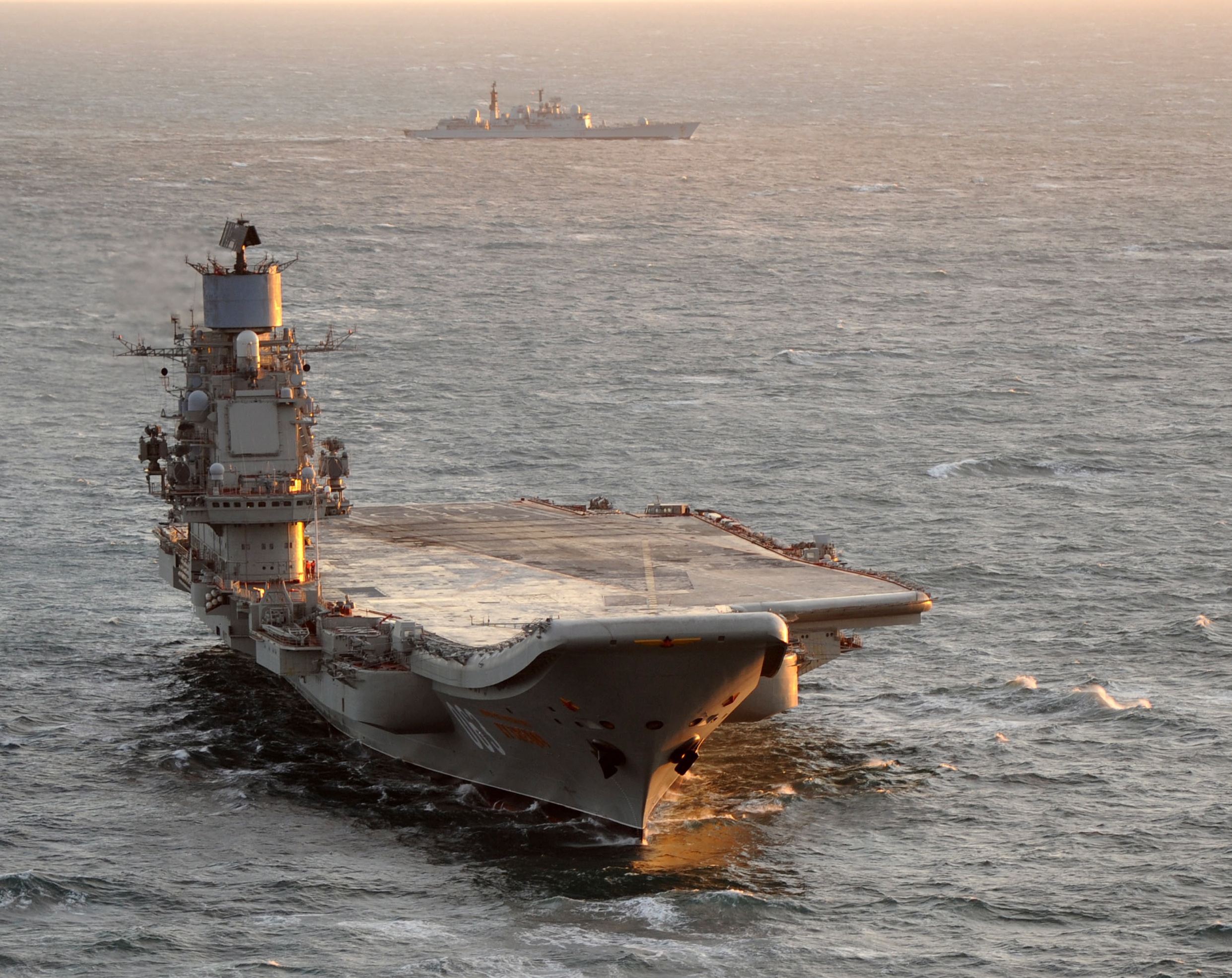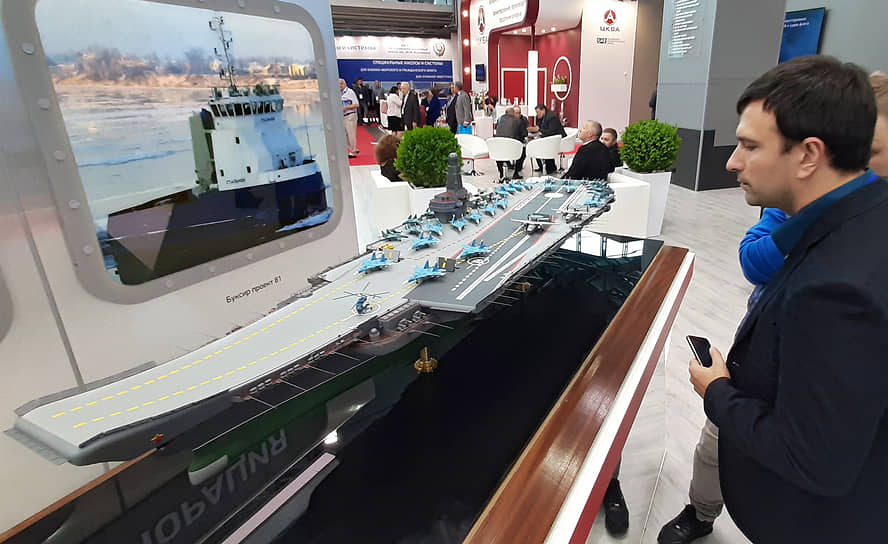Personally, I don't see the reason not to use existing blueprints just alter them for the timeline it's being built in change around how the inside of the ship works.
Because when the existing blueprints for the Ulyanovsk were made they had totally different weapons and sensors and electronics equipment.
They would have rooms space for electronics that these days could be done on a laptop... and their power distribution requirements will have changed too.
The Russians should just pick one and start building it when possible, that would also shorten the time they need to develop it.
Considering the amount of time it will take to set up shore facilities to berth a few carriers not to mention the rather large ships they will operate with, just what is the urgency in getting a carrier in the water?
They already have the Kuznetsov, which together with a couple of upgraded destroyers and one of the two remaining Kirovs upgraded or a few upgraded Slava class vessels they have a reasonable but not amazing surface group.
It is more important to get it right than to get it right now.
What is not clear is if it will carry some UKSK VLS modules (I hope so).
If we are right about the UKSK-M being able to carry cruise and ballistic missiles as well as SAMs then I suspect it will be equipped with rather large numbers of UKSK-M... most of which will carry short range and medium range SAMs as well as ABM missiles based on the S-500.
Very unlikely. All the models have no uksk on them. Price will already be high without them.
See above.
Also the goal of a carrier is to carry fighters which can have their own cruise missiles. Like kh59mk2 which is smaller and cheaper than kalibr.
The carrier will be protected by frigates and cruiser that will have their own uksk in very big numbers.
These are not US carriers, their purpose is primarily air defence... for the Americans what they have is called a carrier group... a large group of ships centred around an aircraft carrier... the ships protect the carrier and the carrier delivers the strike by aircraft.
Russian carriers are different and are there to support the ships, so a group of ships will have an aircraft carrier attached to it to protect it from enemy air attack via aircraft, drones, or missiles, and to extend the effective range of basically surface located radars and sensors. Those ships of course can use Ka-31s to detect low flying threats out to reasonable distances, but a carrier with AWACS does it better... out to greater ranges for longer periods of time.
Price of a few UKSK modules is nothing compared to the rest of a 70-80Kton CVN.
The model has 4* rectangles in the bow area about where K & Ulyanovsk had Granits.
Keep in mind that at the very least they could load up the UKSK tubes with anti sub ballistic rockets to engage subs detected by bow sonar or by helicopters embarked on the ship.
Nothing says go away to a sub like a mach 2.5 ballistic rocket silently delivering a torpedo to within a few hundred metres of your sub with no warning... the first warning you get is the splash of the torpedo hitting the water nearby...
Idea of alaskan passageway is interesting but at this point it would be better to expand it further: i.e. transform it into a full angled deck that can be used to manage helo/stol operations separately from planes.
The purpose of that feature is to create a line where aircraft can be prepared for launch that don't get in the way of launches or landings.
You have to arm and fuel aircraft on deck which is not super fast, and once loaded these aircraft are "dangerous" so you can't load and arm them below decks in case of an accident.
Using this feature they can fuel and load aircraft and at the same time launch the two fighters on the front launch positions lined up with the Ski ramp, and if they want to they can launch two aircraft via EMALS cats, or they could be landing aircraft, or set up two more aircraft on the long takeoff strips for the ski jump... ie two short run planes take off and then their blast shields are lowered and then the long range planes take off... and now you have four launch positions to fill... so the next four aircraft that have been loaded and armed can be moved into position... chocks raised to hold them in place and blast shields raised to protect deck crew and other aircraft and when they are ready they can launch too, while new aircraft are moved from their places on the deck to be armed and fuelled...
It has all the advantages and features of an assembly line...
Also the idea that catapult are needed to operate Awacs planes is IMHO worth of a second thought: Su-25UTG were able to operate from Kutnetzov so why not to try to design an high initial thrust radar carring plane?
Well as I keep mentioning a long endurance airship could carry an enormous antenna and have enormous persistence... it could operate from a relatively small ship from a tether that provides power and two way communication via fibre optics, so it could operate in passive modes and indeed in some crazy frequencies that enemy aircraft wont even detect or can't get a lock on like L band or below...
Aircraft with enough thrust to get airborne would have shorter endurance... the problem is that to get airborne their need a very high power to weight ratio... but once they are airborne a very low power to weight ratio makes them more efficient for cruising at moderate speed for very long periods.
Some weight can be saved by launching with the minimum weight of fuel and also launching a refuelling aircraft to fill them up once they are airborne, but that refuelling aircraft will do better with cat launch as it will allow it to take off with more off loadable fuel... you end up shifting the requirement for the cat from the AWACS to the inflight refuelling aircraft based on the same design.
There are lots of STOL designs... I even mentioned the AN-2 in its upgraded form has a stall speed of about 60km/h... so a carrier heading into the wind might already have that wind speed coming over the deck before the aircraft has even started its engine... some sort of biplane design where the wings can fold around to the fuselage and they can do something with the radar so it is not some huge draggy lump would be interesting... they are developing these new photon based radar... does it look like an AESA radar or is it an optical thing?
You could fit two high bypass turbofan engines on an upgraded composite An-2 and put a huge radar antenna in the nose and the tail and large side panel arrays, with a main upper and lower wing that rotate 90 degrees to lie flush with the fuselage... fill it with electronics and fuel and give it fully retractable undercarriage and an extendible inflight refuelling probe and you might end up with something that wont need a cat launch from carriers and could be operated almost anywhere on land for the role of AWACS... it could even be used on helicopter carriers.
It would not be fast, but AWACS aircraft don't need to be fast... it could be designed to operate at useful altitudes... perhaps 8-10km, and with a new generation radar system it will be rather interesting...
The Yak-44 had a MTOW of 40t and a maximum installed power of 28 000hp.
That is only 14,000hp per engine... I would expect they could manage rather more power from high bypass turbofans these days...










